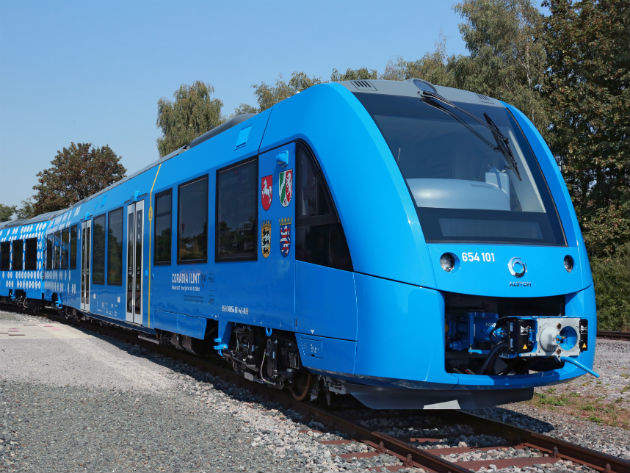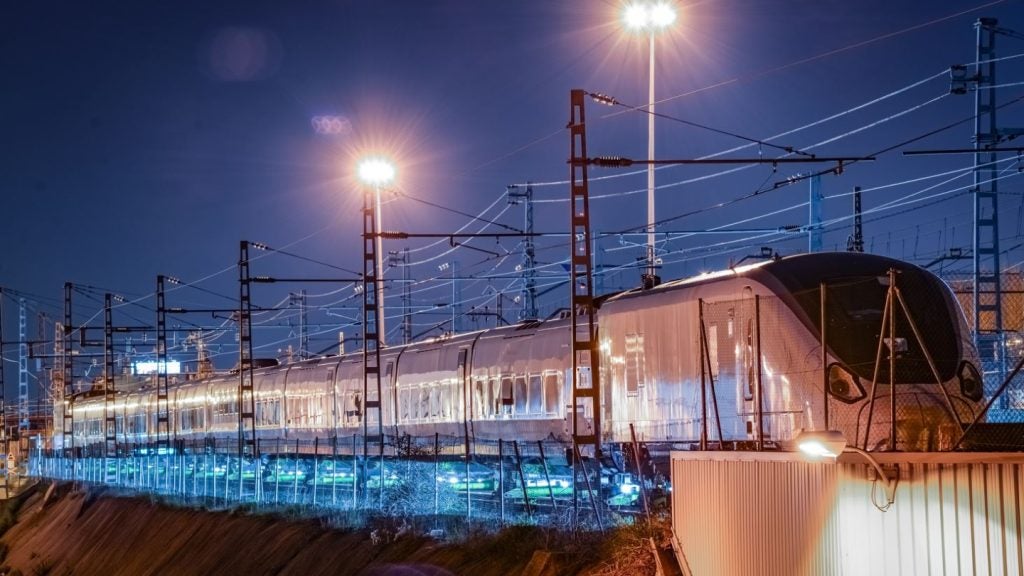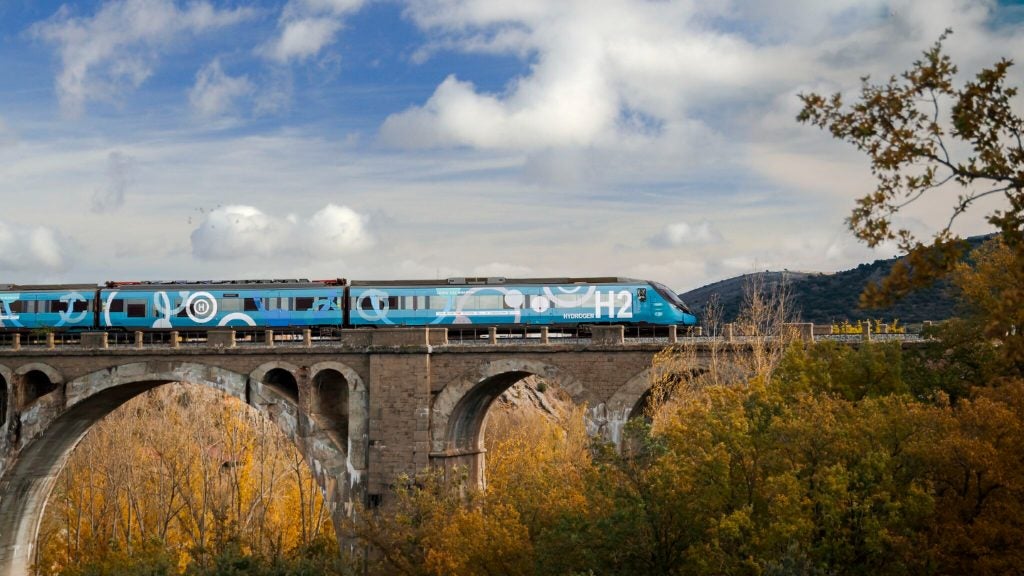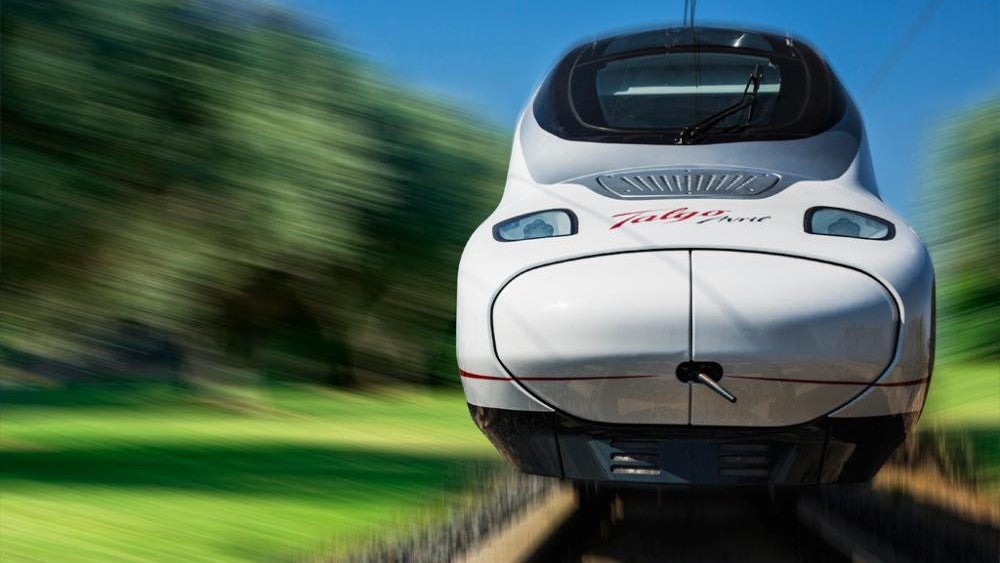

In September, Henri Poupart-Lafarge, Alstom chairman and CEO, took the stage at InnoTrans in Berlin, to declare the launch of the new Coradia iLint, marketed as the world’s first “zero-emission” train, powered by a hydrogen fuel cell.
At the same event, the German transport minister Alexander Dobrindt announced €4m in funding for Bombardier to help develop their Talent 3 project, an electric multiple unit (EMU) equipped with a battery system.
It’s interesting that two industry leaders have decided to take different paths, although the end goal of reducing emissions remains the same. But why batteries and hydrogen fuel cells?
“[They] both offer the advantage that there are no harmful emissions at the point-of-use and they do not rely on continuous wayside infrastructure for power supply,” explains Andreas Hoffrichter, professor in railway management at Michigan State University.
Dr Federico Zenith, senior research scientist for rail and fuel cell applications at Sintef, agrees, highlighting the potentially prohibitive cost of traditional electrification projects. “Hydrogen, and battery, trains can be introduced more gradually and allow operators to test a zero-emission solution without committing a critical amount of resources,” he says.
How well do you really know your competitors?
Access the most comprehensive Company Profiles on the market, powered by GlobalData. Save hours of research. Gain competitive edge.

Thank you!
Your download email will arrive shortly
Not ready to buy yet? Download a free sample
We are confident about the unique quality of our Company Profiles. However, we want you to make the most beneficial decision for your business, so we offer a free sample that you can download by submitting the below form
By GlobalDataHydrogen fuel cells
Alstom’s plan is to run the Coradia iLint on non-electrified lines, viewing it as a cheaper and quicker alternative to mass electrification. The train’s only emission is steam and it also produces a very low level of noise compared to a diesel engine, according to Ulrich Gahl, market and portfolio director of regional trains, Alstom.
Electrical power is generated by combining hydrogen and oxygen in an on-board fuel cell.
The design plans show the hydrogen stored as a gas in tanks on the roof of the train, while in the base of the train the lithium-ion batteries store energy – including that generated during braking – to boost acceleration when necessary. A top speed of 140 km/h is expected, with capacity for 300 seated passengers.
In a sense, it’s a combination of both technologies. “All hydrogen-powered railway vehicles that I am aware of are hybrids,” says Hoffrichter.
The launch comes after Alstom signed letters of intent with the German regions of Lower Saxony, North Rhine-Westphalia and Baden-Württemberg, as well as the Public Transportation Authorities of Hesse, in 2014.
As of November, trials are scheduled to take place by the end of the year. “In 2018 the first trains will be in service in Germany,” says Gahl.
Bombardier’s battery power
As with Alstom, Bombardier’s Talent 3 EMU is principally designed for non-electrified routes, although it is slightly behind in terms of development. “A prototype will be built in 2018,” says Stefan von Mach, chief engineer of the Talent 3. “After 12 months of test runs, passenger services are planned for 2019.”
The company will work with the Technische Universität Berlin, Südwestdeutsche Verkehrs AG and Nahverkehrsgesellschaft Baden-Württemberg, on the three-car unit, which will use Bombardier’s PRIMOVE batteries – already tested on hybrid trams. The prototype is expected to run on regional routes in Baden-Württemberg.
But how does it work?
“In battery mode the pantograph [which collects power from overhead wires] is lowered and the battery provides the energy into the propulsion, and therefore replaces the catenary [the system of overhead wires] as an energy supply. In braking mode, energy is recuperated into the batteries and recharges them,” von Mach explains.
The Talent 3 can also be recharged by overhead wires when travelling on a section of electrified track, or “under dedicated re-charge stations” on longer, non-electrified routes.
According to Zenith, this type of arrangement is suitable for “last-mile” applications, such as sections of track “where catenary cannot be installed along the entire line, for example in tunnels or for aesthetic reasons in city centres”.
So, if relatively short gaps in existing electrification infrastructure need to be overcome, “batteries are probably the way forward”, says Hoffrichter.
Not the first of their kind
Despite the enthusiasm surrounding both endeavours, it is of course only a continuation of efforts to date.
Take Hydrail as an example. The term, which denotes all forms of rail vehicles that use onboard hydrogen for energy, has grown in popularity over the years, to the extent where the German state of Schleswig-Holstein wants to electrify its entire railway network – some 1,100km – using hydrail fuel cell equipment by 2025.
“We want to see a complete network running on hydrail, including international lines up to Esbjerg in Denmark,” commented German Green Party leader Detlef Matthiessen, in June. There have also been projects in the UK and Japan, while last year China unveiled a fully operational hydrogen-powered tram in Qingdao.
In fact, Hydrail has grown from a small-town idea to something that now commands the attention of the whole industry through its international conferences – the twelfth edition will be held in Graz, Austria, next June.
Hoffrichter, who received what is believed to be the world’s first PhD in hydrail from the University of Birmingham in 2013, says hydrogen is better suited to longer distance routes, and is confident that there will be other plans similar to the state of Schleswig-Holstein’s one in the near future.
The same can be said for battery power, which has gathered many admirers in recent times. It was at the beginning of last year when Network Rail – in collaboration with Bombardier and Abellio Greater Anglia – introduced the first battery-powered passenger train to run on Britain’s rail network in more than half a century.
The independently-powered electric multiple unit spent five weeks on the Manningtree-Harwich branch, “demonstrating the viability of an eco-friendly battery-powered train for the 21st century”, according to a Network Rail spokesperson.
“It could ultimately lead to a fleet of [these] trains running on Britain’s rail network, which are quieter and more efficient than diesel-powered trains, making them better for passengers and the environment.”
What’s best for the future?
What, then, is better suited to expediting a cleaner railway? There is no right or wrong answer, says Hoffrichter.
“It depends on the existing railway system and the objectives of the railway organisation,” he explains. “The primary drivers to investigate alternatives to wayside electrification or diesel power are cost of infrastructure or fuel, a desire or requirement to reduce emissions at the point-of-use, and avoidance of overhead electrification due to visual pollution.”
However, Zenith strikes a slight different tone, although he too accepts that local requirements determine how the industry will move away from diesel.
He says: “Hydrogen appears to be the better alternative with current technology, but the picture may change with the development of both batteries and fuel cells in terms of cost.
“Fuel cells can become much cheaper with mass production, whereas batteries are already mass-produced, and their projected price reduction in the future will come mostly from technological advances.”
But, continues Zenith, “the main disadvantage of hydrogen is the unavailability of off-the-shelf technology and the risks connected with being a first mover”.
There’s no doubt that hydrogen fuel cells and batteries will play an integral part in lowering emissions, and both come with their own pros and cons. Nonetheless, it is generally accepted they are the pre-eminent methods – aside from mass electrification – by which to rid rail of diesel.






